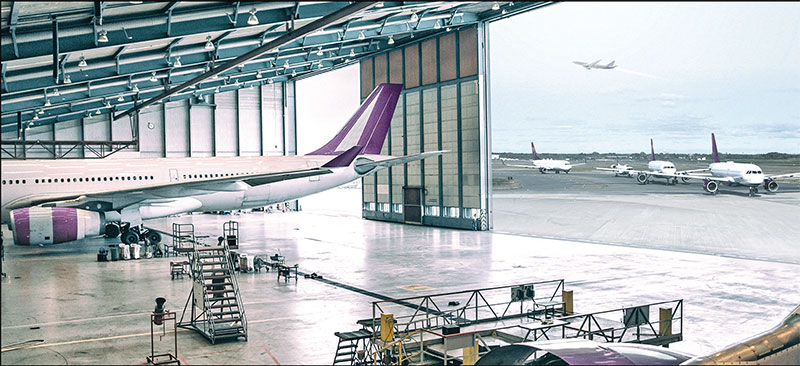MRO industries in India suffer heavily because of a flawed tax regime
Yunus Dar
This year India has been the fastest growing domestic air travel market globally with 18.6 per cent more people flying within the country than in the previous year. This has presented an opportunity for the country to be the leading global Maintenance, Repair and Overhaul (MRO) hub. Growing aircraft fleet size, new airports, strategic geographic location and a rich pool of engineering expertise could help India become the leader in the MRO sector.

The current market size of the MRO industry in India, which is estimated to be about USD 700-800 million, is expected to reach USD1.2 billion by 2020. The global MROs view the country with a keen interest seeking a valuable gateway between the Middle East and Asia-Pacific. The low labour costs locally are crucial for this sector to boom. The Aviation Week’s Fleet and MRO Forecast pegs the MRO market growth in India at 7.7 per cent annually over the next decade.
It’s not surprising considering that the fleet growing at 9.9 per cent annually, which was 620 in 2018, will see a fleet of 2,300 in 2040. The country has over 1,000 aircraft on order at present, and is likely to become the third largest buyer of commercial passenger planes in the world, only behind the US and China.
The factors responsible for this growth are many. In recent years the government has taken many new initiatives to boost the sector. Some of these are: expansion and development of new airports, growing fleet of low-cost carriers, renewed Foreign Direct Investment (FDI) policy and increasing focus on regional connectivity.
Challenges in the Sector
Despite all the above factors, the MRO industry faces many hurdles in India today. The severe tax anomaly with foreign jurisdictions has put the industry at loggerhead with the government. The vast expansion of the fleet demands a robust MRO ecosystem which the government fails to realise. There has been widespread criticism on the prevailing tax structure and import duties in MRO industry, which are severely hampering the sector.
The lack of MRO infrastructure is forcing most Indian carriers to carry out MRO in Sri Lanka, South East Asia, Middle East or Europe. Despite incurring the additional cost of empty ferry flights, additional logistics costs and payment in foreign exchange, it still works out cheaper and better than doing MRO in India, which goes to show how bad the tax structure is in India.
The Directorate General of Civil Aviation (DGCA) has approved 40 overseas entities to conduct MRO on India-registered aircraft, which account over 90 per cent of the MRO spend of Indian carriers. The GST on aviation MRO is levied at 18 per cent. Countries like Singapore and Malaysia levy the tax at 7 per cent, and in Sri Lanka there is no tax.
The Industry Uprising
As a result, according to the industry sources, this shift has caused a loss of more than 90,000 direct jobs to overseas markets like Sri Lanka, Singapore, Thailand, France and Germany, and the industry blames the ‘lop-sided’ tax policies for this and is seeking a level-playing field on this front. Besides, the industry is demanding customs duty on MRO services be applied at 18 per cent on all imports.
The MRO Association of India has for long been urging the government to bring down GST rate on the MRO services to 5 per cent from the present 18. The association has even expressed fears of a ‘shut-down’ of the industry if the ‘anomalies’ were not fixed on priority.
Pulak Sen, founder secretary general, MRO Association of India speaking to FORCE said that there is an 18 per cent GST in the country, while Singapore and Malaysia charge just 7 per cent taxes and in Sri Lanka there is no taxation at all on these services. The Indian airlines, therefore, are forced to avail MRO services outside the country, thus saving a lot of costs.
You must be logged in to view this content.

